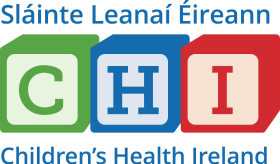Scoliosis
Suímh ar fáil:
Find lots more information for patients and families in CHI's Scoliosis Information Hub (link below in 'Additional Information' section).
Scoliosis is a condition in which the spine develops an abnormal curve, often twisting into an "S" or "C" shape. This curvature may also affect nearby structures such as the ribs or the pelvis.
Scoliosis is rarely painful in children, but the impact on the spine and posture can be noticeable. For most children, scoliosis is mild and does not require treatment. However, for a small percentage, early diagnosis and treatment are crucial to prevent the condition from worsening. Treating scoliosis early is important, as a child’s growing body responds more effectively to treatment, and a child’s growth spurts can cause the curve to increase quickly.
Glaoigh orainn
Useful contacts
CHI at Crumlin Spinal Clinical Nurse Specialists:
Phoneline: 01 409 6024 (please leave a message)
Email: spinal.disorders@childrenshealthireland.ie
CHI at Temple Street Clinical Nurse Specialist:
Email: Spinaldisorders.TSCNS@childrenshealthireland.ie
Outpatient (OPD) appointments:
Orthopaedic OPD phone line: 01 428 2163 / 2409
Email: opd.reception@childrenshealthireland.ie
Urgent situation/Emergency:
Do not wait for a response from The Spinal Disorders Service.
Consider attending your GP or local Emergency Department.
Ár Seirbhísí
Scoliosis can occur in children in a wide range of ages, but it does tend to affect adolescents more than the rest of the population. Idiopathic scoliosis is the most common type of scoliosis. Idiopathic means that there is no known cause for the condition.
Scoliosis services include
- Outpatients clinics
- Spinal surgery
About Scoliosis
Early onset scoliosis is found in children younger than 10 years of age. Types of early onset scoliosis includes:
- congenital scoliosis: where the spine forms abnormally before birth.
- infantile idiopathic scoliosis: occurs before the age of three, tends to affect boys more than girls, and usually resolves on its own.
- juvenile idiopathic scoliosis: occurs between the ages of three and nine, and there is a high risk that the condition will progress.
Adolescent idiopathic scoliosis affects children between the age of 10 and 18, and tends to affect more girls than boys.
Neuromuscular scoliosis affects children with Neuromuscular conditions, such as cerebral palsy, spina bifida or muscular dystrophy, which affect the nerves and muscles.
Syndromic scoliosis is a type of scoliosis that occurs as part of a broader medical syndrome or condition. Unlike idiopathic scoliosis, which has no known cause, syndromic scoliosis is directly associated with a specific underlying syndrome that often affects multiple systems in the body.
Scoliosis symptoms can vary depending on the severity of the spinal curve. In many cases, especially mild scoliosis, the symptoms may not be obvious. However, some common signs include:
- Uneven shoulders, waistline or hips.
- One shoulder blade may stick out more than the other.
- In more severe cases, the ribs may protrude on one side due to the twisting of the spine.
- A noticeable tilt of the body to one side.
Early diagnosis of scoliosis is key to effective management and treatment, minimising the likelihood of complications or the need for invasive procedures. If you notice any signs of scoliosis in your child, make an appointment with your GP.
Diagnosis typically involves a combination of physical exams, medical history, and imaging tests.
Physical Examination
- Adam’s Forward Bend Test: The child bends forward at the waist with arms hanging freely. The doctor looks for any unevenness in the ribs or back, which may indicate a spinal curve.
- Posture Assessment: The doctor examines the child’s shoulders, hips, and spine alignment to identify asymmetries.
Imaging Tests
If scoliosis is suspected during the physical exam, imaging tests (such as an X-Ray) are used to confirm the diagnosis and measure the curve.
When scoliosis is diagnosed, the main goal of treatment is to prevent the curvature from worsening and to address any potential impact on breathing, posture, or movement. Treatment options depend on factors like:
- The severity of the curve.
- The child’s age.
- Whether the curve is affecting the child’s overall health, such as their ability to breathe.
Treatment Options:
- Observation: In mild cases, the doctor may recommend monitoring the curve through regular check-ups and imaging to see if it worsens.
- Bracing or Casting: For moderate cases, a brace or cast may be used to guide the spine's growth and prevent the curve from increasing. This is most effective when the child is still growing.
- Surgery: In severe cases, surgery may be necessary to correct the curve and stabilise the spine. Surgical options are carefully considered based on the child’s needs and overall health.
Seirbhísí gaolmhara
Bardaí
As part of your child’s assessment or treatment, they may need to stay in the hospital. If they do, they will stay on one of these wards:
Buail leis an bhfoireann
-
Consultant in Orthopaedics
-
Consultant in Orthopaedics
-
Consultant in Orthopaedics
-
Consultant in Orthopaedics
-
Mr Damian Mc Cormack
Consultant in Orthopaedics
-
Consultant in Orthopaedics
-
Consultant in Orthopaedics
-
Consultant Orthopaedic Surgeon
Ábhar an leathanaigh
Ar an leathanach seo gheobhaidh tú eolas faoi:
Do ghairmithe cúram sláinte
Referral Information
Digitalizing Scoliosis GP Referrals (CHI at Crumlin)
Attention all GPs! 🚀
📲 Join us in revolutionizing scoliosis care by going digital!
👉 How?
Send your scoliosis referrals through Healthlink
📋 Minimum Data Set requirements: (CHI at Crumlin)
Stick to the essentials for scoliosis referrals.
📚 Resource Pack: (CHI at Crumlin)
Dive into detailed data requirements!
